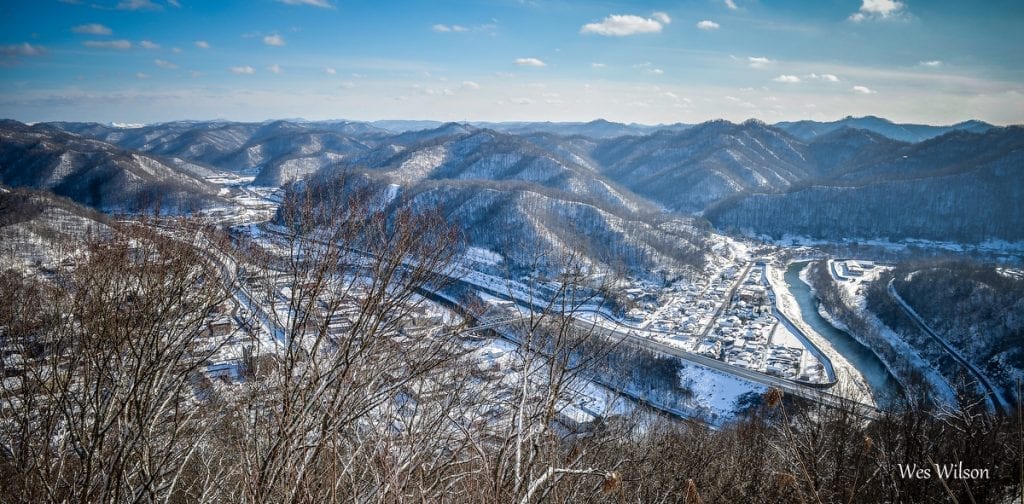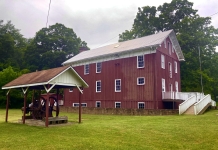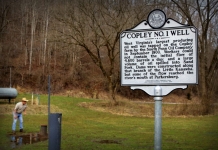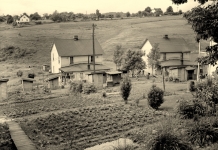
Also known as the Tug Fork and Tug River, the Tug Fork River is a winding 159-mile tributary of the Big Sandy River that drains parts of the Cumberland Mountains and a small part of the Allegheny Mountains region in southern and southwestern West Virginia.
The Tug Fork was a significant transportation route through one of the most rugged coal-mining regions in the U.S., providing passage for the Norfolk & Western Railway. The cities of Welch, West Virginia, and Williamson, West Virginia, were chief centers of industry along its course.
The river rises in southern West Virginia in McDowell County near the Virginia state line approximately 15 miles west of Bluefield, West Virginia. Its source is on Big Stone Ridge near Jenkinjones, West Virginia, the southernmost extent of Great Flat Top Mountain and the Allegheny Mountains. From there, it meanders northwestward in a narrow valley through rugged lowlands near Welch and through the Cumberlands, where, along the edge of Mingo County, it forms the border with Virginia and Kentucky. At Fort Gay, West Virginia, in Wayne County, it joins the Louisa Fork to form the Big Sandy River.
The river formed the informal border between lands possessed by the Hatfields, of West Virginia, and the McCoys, of Kentucky, who fought a legendary feud in the region in the late 1800s. Read also: Hatfield and McCoy Feud
History of the Tug Fork River
The origin of the name Tug Fork is lost, though two possible sources are derived from native histories and prehistories. According to some sources, the name is derived from the Cherokee word "tugulu," which refers to the forks of a stream. American toponymist George Rippey Stewart proposed that in 1756 a small army of Virginians and Cherokees raiding Shawnee settlements roasted and ate "tugs" of buffalo meat along the river.






























